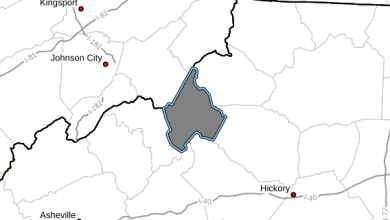Last Updated on February 8, 2022 8:37 am
ASHEVILLE, NC – The National Forests in North Carolina has released the Nantahala and Pisgah National Forests’ revised forest plan and the revision process has entered the final phase, a 60-day objection period for parties who submitted substantive comments during development of the plan. Once any objections have been resolved, the forest plan will be finalized, and implementation can begin.
“The forest plan creates the framework for us to work with partners into the future to successfully address major challenges like climate resilience and sustainable recreation,” said James Melonas, Forest Supervisor of the National Forests in North Carolina. “Ultimately we are focused on the opportunities we have to keep these national forests healthy so they can continue to supply clean water to communities, contribute to the region’s economy, and be a place of respite and recreation.”
The revised plan reflects changes in economic, social, and ecological conditions, as well as changes in resource demands that have occurred since the previous forest plan was signed in 1987, and significantly amended in 1994. The new plan puts emphasis on the ways people use the forest and the places that are important to people.
In developing the plan, forest resource specialists worked with representatives of state and local government, Tribes, interest groups and the public to consider alternative approaches to managing the forests that offered different ways to make progress towards multiple goals and be sensitive to special places. The final plan balances the tradeoffs among the multiple uses of national forests including recreation, timber, water, wilderness, and wildlife habitat.
The revised plan takes a whole ecosystem focus, using a science-based approach to address shortages in young forest, old growth forest, and open forest conditions and the control of nonnative invasive species. It also emphasizes use of prescribed burns to restore fire-adapted ecosystems. For every ecological community in the forest, the plan has an identified set of desired conditions, a vision for what it will be once the goals are fully achieved.
“By using ecological communities, we will consider the work that needs to be done across a broader landscape, improving restoration efforts for ecosystems and the wildlife that depend on them,” said Michelle Aldridge, planning team lead.
The plan is built on significant public engagement and the best available science to guide forest management for the next 15-20 years. Public comments were used to improve the revised plan and are no longer being accepted. The revised forest plan, environmental impact statement, and the legal notice for the specific requirements for filing an objection are available at www.fs.usda.gov/goto/nfsnc/nprevision.
For more information, visit www.fs.usda.gov/nfsnc or follow the National Forests in North Carolina on Facebook (www.facebook.com/nfsnc) or Twitter (twitter.com/NFsNCarolina).


















